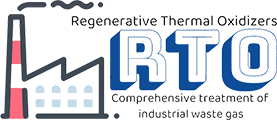معلومات اساسية.
نموذج رقم.
RTO مذهلة
يكتب
محرقة
توفير الطاقة
100
سهلة التشغيل
100
كفاءة عالية
100
صيانة أقل
100
العلامة التجارية
بجامازينج
حزمة النقل
خشب خارجي
مواصفة
180*24
أصل
الصين
رمز النظام المنسق
8416100000
وصف المنتج
رتو
مؤكسد حراري متجدد
بالمقارنة مع الاحتراق الحفزي التقليدي، فإن المؤكسد الحراري المباشر؛ يتميز RTO بكفاءة تسخين عالية، وتكلفة تشغيل منخفضة، والقدرة على معالجة غاز النفايات منخفض التركيز وتدفق كبير؛ عندما يكون تركيز المركبات العضوية المتطايرة مرتفعًا، يمكن تحقيق إعادة تدوير الحرارة الثانوية، مما يقلل بشكل كبير من تكلفة التشغيل؛ لأن RTO يمكنه تسخين غاز النفايات مسبقًا بمستويات من خلال مجمع الحرارة الخزفي، مما قد يجعل غاز النفايات ساخنًا تمامًا ومتشققًا بدون زاوية ميتة (كفاءة المعالجة> 99٪)؛ مما يقلل من أكاسيد النيتروجين في غاز العادم؛ إذا كانت كثافة المركبات العضوية المتطايرة> 1500 مجم / متر مكعب؛ عندما يصل غاز النفايات إلى منطقة التكسير، يتم تسخينه إلى درجة حرارة التكسير بواسطة مجمع الحرارة، سيتم إغلاق الموقد في هذه الحالة.
يمكن تقسيم RTO إلى نوع الغرفة والنوع الدوار وفقًا لاختلاف وضع التشغيل. يتمتع النوع الدوار RTO بمزايا في ضغط النظام، واستقرار درجة الحرارة، ومقدار الاستثمار، وما إلى ذلك.
| أنواع RTO | كفاءة | تغير الضغط (مليمتر مكعب)؛ | مقاس | (الحد الأقصى)؛حجم العلاج | |
| كفاءة العلاج | كفاءة إعادة تدوير الحرارة | ||||
| نوع دوار RTO | 99% | 97% | 0-4 | صغير(مرة واحدة)؛ | 50000 نيوتن متر مكعب/ساعة |
| نوع RTO ذو ثلاث غرف | 99% | 97% | 0-10 | كبير (1.؛5 مرات)؛ | 100000 نيوتن متر مكعب/ساعة |
| نوع RTO ذو غرفتين | 95% | 95% | 0-20 | الوسط(1.;2 مرات)؛ | 100000 نيوتن متر مكعب/ساعة |
مؤكسد حراري متجدد، مؤكسد حراري متجدد، مؤكسد حراري متجدد، مؤكسد حراري، مؤكسد حراري، مؤكسد حراري، مؤكسد، مؤكسد، مؤكسد، محرقة، محرقة، معالجة الغازات العادمة، معالجة الغازات العادمة، معالجة الغازات العادمة، معالجة المركبات العضوية المتطايرة، معالجة المركبات العضوية المتطايرة، معالجة RTO، RTO، RTO، RTO، RTO، RTO، RTO، RTO
العنوان: الطابق الثامن، E1، مبنى Pinwei، طريق Dishengxi، Yizhuang، ZheJiang، الصين
نوع العمل: مصنع/شركة تصنيع، شركة تجارية
نطاق العمل: الكهرباء والإلكترونيات، المعدات والمكونات الصناعية، آلات التصنيع والمعالجة، المعادن والطاقة
شهادة نظام الإدارة: ISO 9001، ISO 14001
المنتجات الرئيسية: Rto، خط طلاء الألوان، خط الجلفنة، سكين الهواء، قطع غيار لخط المعالجة، الطلاء، المعدات المستقلة، بكرة الحوض، مشروع التجديد، المنفاخ
مقدمة عن الشركة: شركة ZheJiang Amazing Science & Technology Co., Ltd هي شركة مزدهرة عالية التقنية، تقع في منطقة التنمية الاقتصادية والتكنولوجية في ZheJiang (BDA). تلتزم شركتنا بمفهوم الواقعية والإبداع والتركيز والكفاءة، وتخدم بشكل أساسي صناعة معالجة غازات النفايات (VOCs) والمعدات المعدنية في الصين وحتى العالم أجمع. لدينا تكنولوجيا متقدمة وخبرة غنية في مشروع معالجة غازات النفايات VOCs، والذي تم تطبيق مرجعه بنجاح في صناعة الطلاء والمطاط والإلكترونيات والطباعة وما إلى ذلك. لدينا أيضًا سنوات من تراكم التكنولوجيا في البحث وتصنيع خط معالجة الفولاذ المسطح، ونمتلك ما يقرب من 100 مثال للتطبيق.
تركز شركتنا على البحث والتصميم والتصنيع والتركيب والتشغيل لنظام معالجة غاز النفايات العضوية المتطايرة ومشروع تجديد وتحديث خط معالجة الفولاذ المسطح لتوفير الطاقة وحماية البيئة. يمكننا تزويد العملاء بالحلول الكاملة لحماية البيئة وتوفير الطاقة وتحسين جودة المنتج وغيرها من الجوانب.
نحن نشارك أيضًا في قطع الغيار المختلفة والمعدات المستقلة لخط طلاء الألوان، خط الجلفنة، خط التخليل، مثل الأسطوانة، المقرن، المبادل الحراري، جهاز الاسترداد، سكين الهواء، المنفاخ، اللحام، مستوي التوتر، ممر الجلد، مفصل التمدد، القص، الموصل، الخياطة، الموقد، الأنبوب المشع، محرك التروس، المخفض، إلخ.
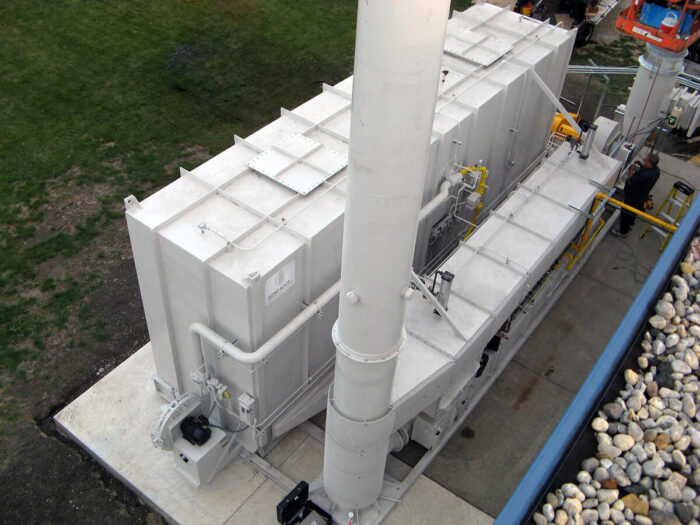
What is the cost of installing a regenerative thermal oxidizer?
The cost of installing a regenerative thermal oxidizer (RTO) can vary significantly depending on several factors. These factors include the size and capacity of the RTO, the specific requirements of the application, site conditions, and any additional customization or engineering needed. However, it’s important to note that RTOs are generally considered a significant capital investment due to their complex design and high-performance capabilities.
Here are some cost considerations associated with installing an RTO:
- RTO Size and Capacity: The size and capacity of the RTO, typically measured in terms of exhaust flow rate and pollutant concentration, are important cost factors. Larger RTOs capable of handling higher exhaust volumes and pollutant concentrations generally have higher upfront costs compared to smaller units.
- Engineering and Customization: The engineering and customization requirements for integrating the RTO into the existing industrial process can impact the installation cost. This includes factors such as ductwork modifications, electrical connections, and any necessary process integration to ensure proper functioning of the RTO within the overall system.
- Site Preparation: The site where the RTO will be installed may require preparation to accommodate the equipment. This can involve constructing foundations, providing adequate space for the RTO and associated components, and ensuring proper access for installation and maintenance.
- Auxiliary Systems and Equipment: In addition to the RTO itself, there may be auxiliary systems and equipment required for effective operation. This can include pre-treatment systems, such as scrubbers or filters, heat recovery units, monitoring and control systems, and stack emissions monitoring equipment. The cost of these additional components should be considered in the overall installation cost.
- Installation Labor and Equipment: The cost of labor and equipment required for the installation process, including crane services and specialized contractors, should be factored into the overall cost. The complexity of the installation and any specific site challenges can influence these costs.
- Permits and Compliance: Obtaining necessary permits and complying with regulatory requirements can involve additional costs. This includes fees for environmental permits, engineering studies, emissions testing, and compliance documentation.
Due to the many variables involved, it is challenging to provide a specific cost range for installing an RTO. It is recommended to consult with reputable RTO manufacturers or engineering firms, who can assess the specific requirements of the application and provide detailed cost estimates based on the project scope.
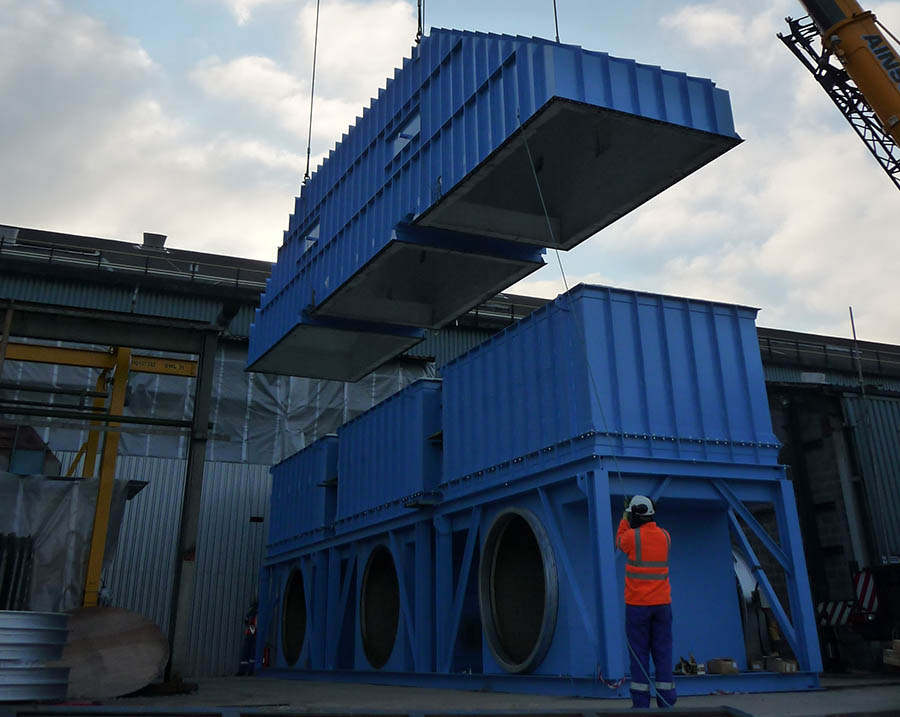
هل من الآمن تشغيل المؤكسدات الحرارية المتجددة؟
تم تصميم المؤكسدات الحرارية المتجددة (RTOs) مع مراعاة الاعتبارات المتعلقة بالسلامة لضمان تشغيلها بأمان. عند تركيبها وتشغيلها وصيانتها بشكل صحيح، توفر المؤكسدات الحرارية المتجددة مستوى عالٍ من السلامة. فيما يلي بعض النقاط الرئيسية المتعلقة بسلامة تشغيل المؤكسدات الحرارية المتجددة:
- السلامة من الاحتراق والحرائق: تم تصميم أجهزة حرق الوقود السائل لحرق وتدمير المركبات العضوية المتطايرة (VOCs) والملوثات الأخرى الموجودة في تيار العادم بأمان. وهي تتضمن ميزات أمان مختلفة لمنع خطر الحرائق أو الانفجارات غير المنضبطة. قد تتضمن هذه الميزات أجهزة إيقاف اللهب وأجهزة استشعار درجة الحرارة وأجهزة تخفيف الضغط وأنظمة الإغلاق الآلية لضمان التشغيل الآمن في حالة ظروف التشغيل غير الطبيعية.
- أنظمة التحكم والمراقبة: تم تجهيز محطات التحكم والتشغيل بأنظمة تحكم ومراقبة متقدمة تراقب باستمرار العديد من المعلمات مثل درجة الحرارة والضغط ومعدلات التدفق. توفر هذه الأنظمة بيانات في الوقت الفعلي للمشغلين، مما يسمح لهم باكتشاف أي انحرافات عن ظروف التشغيل الطبيعية على الفور. غالبًا ما يتم تضمين أجهزة الإنذار وأقفال الأمان لتنبيه المشغلين وبدء الإجراءات المناسبة في حالة المواقف غير الطبيعية.
- استعادة الحرارة والكفاءة الحرارية: تم تصميم أنظمة إعادة تدوير الحرارة لتعظيم الكفاءة الحرارية من خلال استعادة وإعادة استخدام الحرارة المتولدة أثناء عملية الأكسدة. وهذا يقلل من إجمالي استهلاك الطاقة ويقلل من خطر تراكم الحرارة داخل النظام، مما يساهم في التشغيل الآمن ومنع درجات الحرارة المفرطة التي قد تشكل مخاطر على السلامة.
- اختيار المعدات والمواد: يتم تصنيع أجهزة المبادل الحراري الحراري باستخدام مواد يمكنها تحمل درجات الحرارة العالية والظروف التآكلية التي تواجهها أثناء التشغيل. تُستخدم عادةً مواد مقاومة للحرارة، مثل الأسِرَّة الخزفية أو المبادلات الحرارية المعدنية. يضمن اختيار المواد المناسبة سلامة المعدات وطول عمرها، مما يقلل من خطر الأعطال أو التسربات التي قد تعرض السلامة للخطر.
- الالتزام بالمعايير واللوائح: يجب أن تمتثل مرافق التدريب العملي لمعايير وأنظمة السلامة المعمول بها. تحدد هذه المعايير متطلبات محددة لتصميم وتركيب وتشغيل وصيانة أنظمة التحكم في تلوث الهواء، بما في ذلك مرافق التدريب العملي. يضمن الامتثال لهذه المعايير أن مرافق التدريب العملي تلبي معايير السلامة اللازمة وتساعد في حماية صحة ورفاهية الموظفين والبيئة المحيطة.
- تدريب المشغل والصيانة: يعد التدريب الكافي للمشغل والصيانة المنتظمة أمرًا بالغ الأهمية لتشغيل RTO بأمان. يجب أن يتلقى المشغلون تدريبًا شاملاً على تشغيل النظام وإجراءات السلامة وبروتوكولات الاستجابة للطوارئ. بالإضافة إلى ذلك، تساعد الصيانة والفحوصات الروتينية في تحديد ومعالجة أي مخاوف محتملة تتعلق بالسلامة أو مشكلات المعدات قبل تفاقمها.
على الرغم من أن تشغيل أجهزة RTO آمن بشكل عام، فمن الضروري اتباع إرشادات الشركة المصنعة والحفاظ على بروتوكولات السلامة المناسبة والالتزام باللوائح المعمول بها لضمان التشغيل الآمن والموثوق به.
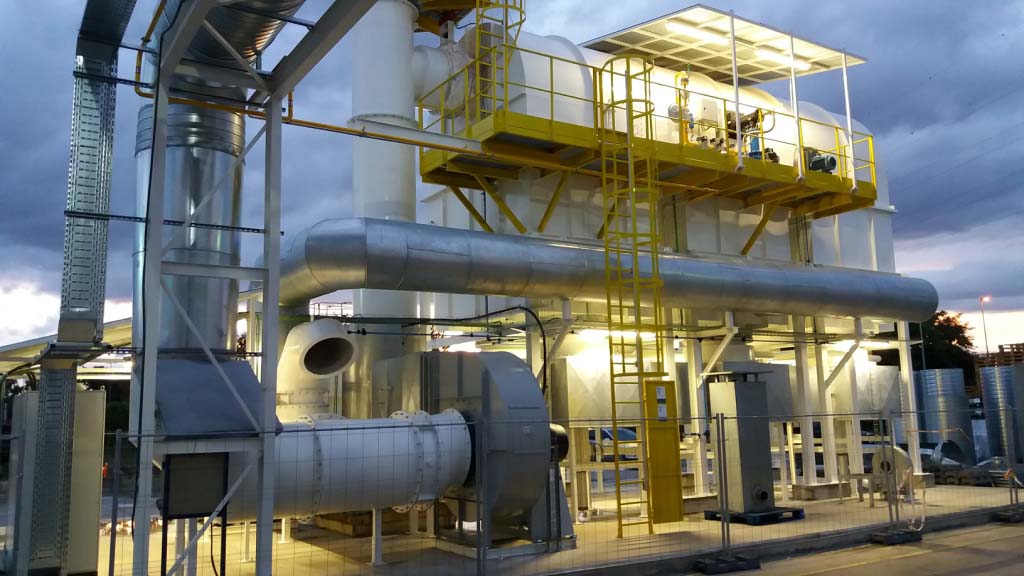
How efficient are regenerative thermal oxidizers in destroying volatile organic compounds (VOCs)?
Regenerative thermal oxidizers (RTOs) are highly efficient in destroying volatile organic compounds (VOCs) emitted from industrial processes. Here are the reasons why RTOs are considered efficient in VOC destruction:
1. كفاءة تدمير عالية: RTOs are known for their high destruction efficiency, typically exceeding 99%. They effectively oxidize VOCs present in the industrial exhaust streams, converting them into less harmful byproducts, such as carbon dioxide and water vapor. This high destruction efficiency ensures that the majority of VOCs are eliminated, resulting in cleaner emissions and compliance with environmental regulations.
2. Residence Time: RTOs provide a sufficiently long residence time for the combustion of VOCs. In the RTO chamber, the VOC-laden air is directed through a ceramic media bed, which acts as a heat sink. The VOCs are heated to the combustion temperature and react with the available oxygen, leading to their destruction. The design of RTOs ensures that the VOCs have ample time to undergo complete combustion before being released into the atmosphere.
3. Temperature Control: RTOs maintain the combustion temperature within a specific range to optimize VOC destruction. The operating temperature is carefully controlled based on factors such as the type of VOCs, their concentration, and the specific requirements of the industrial process. By controlling the temperature, RTOs ensure that the VOCs are efficiently oxidized, maximizing destruction efficiency while minimizing the formation of harmful byproducts, such as nitrogen oxides (NOx).
4. Heat Recovery: RTOs incorporate a regenerative heat recovery system, which enhances their overall energy efficiency. The system captures and preheats the incoming process air by utilizing the heat energy from the outgoing exhaust stream. This heat recovery mechanism minimizes the amount of external fuel required to sustain the combustion temperature, resulting in energy savings and cost-effectiveness. The heat recovery also helps maintain the high destruction efficiency of VOCs by providing a consistent and optimized operating temperature.
5. Catalyst Integration: In some cases, RTOs can be equipped with catalyst beds to further enhance VOC destruction efficiency. Catalysts can accelerate the oxidation process and lower the required operating temperature, improving the overall efficiency of VOC destruction. Catalyst integration is particularly beneficial for processes with lower VOC concentrations or when specific VOCs require lower temperatures for effective oxidation.
6. Compliance with Regulations: The high destruction efficiency of RTOs ensures compliance with environmental regulations governing VOC emissions. Many industrial sectors are subject to stringent air quality standards and emission limits. RTOs provide an effective solution for meeting these requirements by reliably and efficiently destroying VOCs, reducing their impact on air quality and public health.
In summary, regenerative thermal oxidizers (RTOs) are highly efficient in destroying volatile organic compounds (VOCs). Their high destruction efficiency, residence time, temperature control, heat recovery capabilities, optional catalyst integration, and compliance with regulations make RTOs a preferred choice for industries seeking effective and sustainable solutions for VOC abatement.
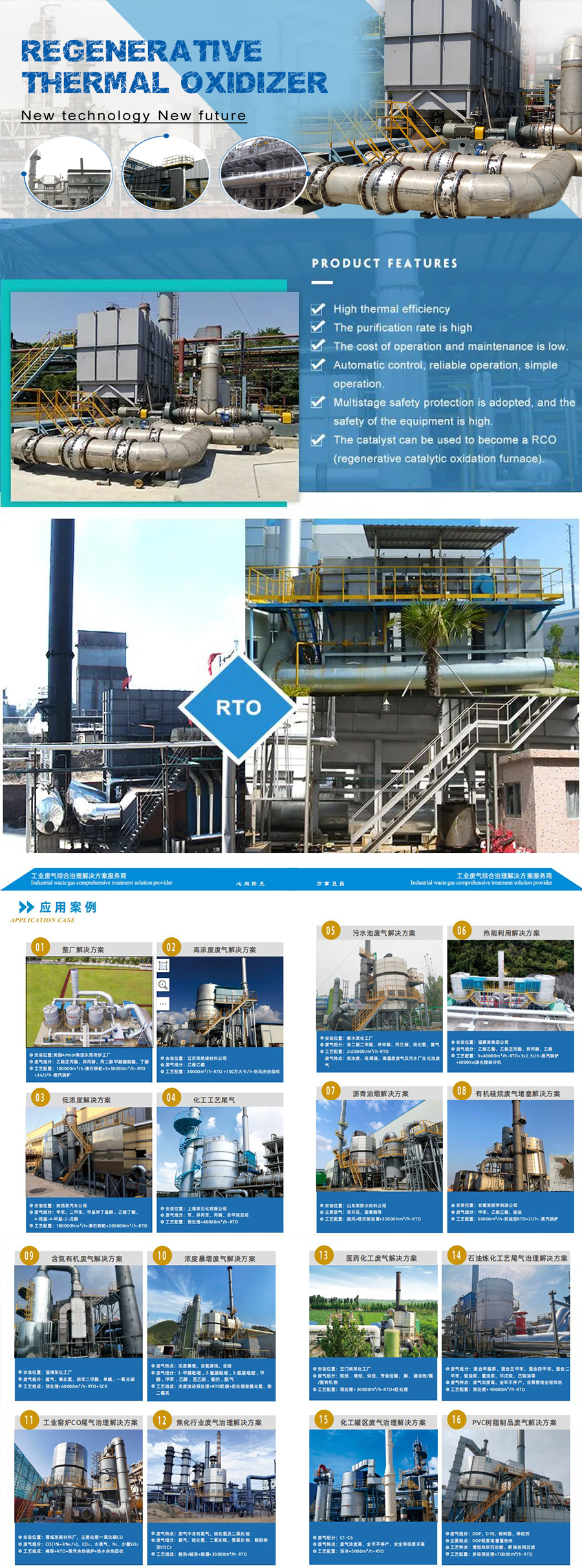
محرر بواسطة دريم 2024-11-27
